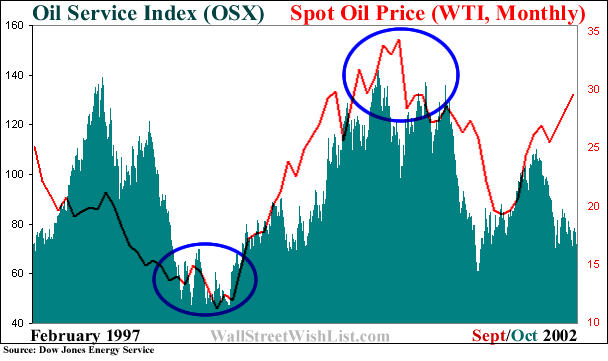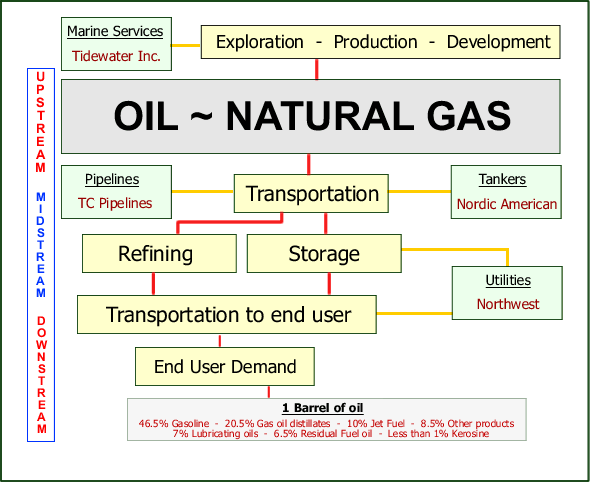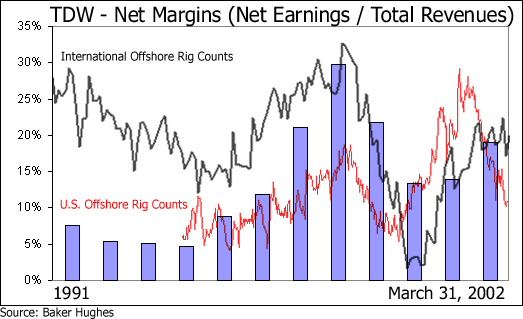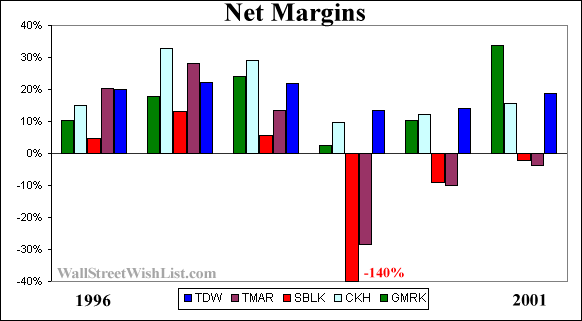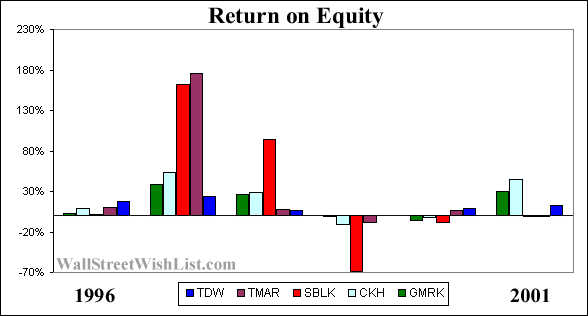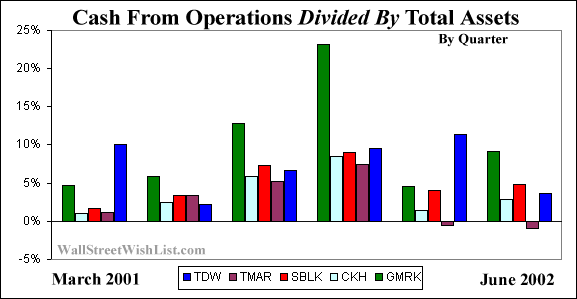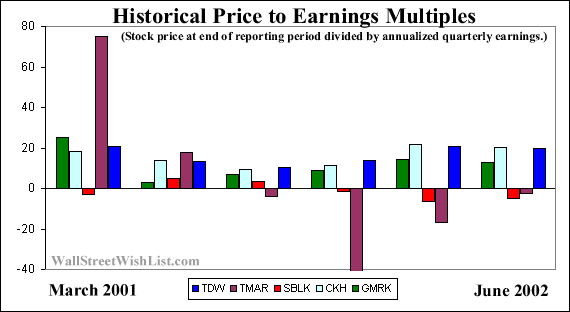|
Beyond the 4 direct competitors listed above, Tidewater is also in direct competition with Edison Chouest, a privately held company that deals primarily in deep water services, Maersk, the shipping ‘name’ of giant A.P. Moller, and Swire Pacific, a division of the Swire Group with annualized marine service revenues (including container services) of $893 million HK$. In the GOM Tidewater is in competition with the 4 listed companies (and Edison Chouest), while globally Maersk and Swire are competitors.
Conclusions
Tidewater is one of the strongest oil services companies. Its conservative business approach and current vessel replenishment plans (which were enacted using primarily working capital and short term debt), suggest that its strength is not fleeting, but will remain a permanent fixture in the marine services industry. When combining the industry overview with a corporate overview the investor can surmise a possible investment recommendation.
Part III Investment Opinions
With falling utilization rates and overall weakness in day vessel rates, we believe that Tidewater’s stock price may have room to drop – this is an extremely near term consideration that takes into account TDW’s recent share price strength.
Obviously, and because the entire industry is feast or famine oriented, we would prefer to purchase Tidewater shares when the trough both in valuations and operational results, is near. Not before. We are concerned that current energy price trends are overstated because of Iraqi war fears, and prices could fall at any moment dependent upon developments in this area. If prices fall the argument that rig counts should soon pick-up will likely crumble quickly, as will Tidewater’s stock price.
Outlook
-- If the Financial Accounting Standard Board elects to have companies expense stock options, this could have a negative impact on Tidewater’s future earnings estimates. While Tidewater is quick to report that they list stock options in the footnotes, what they, and many other companies, do not consider is that analysts’ operational earnings estimates, which can move a stock price, do not include stock options. We believe that the Company should expense options before they are forced to. We expect developments on this matter, based upon FASB discussions and increasing investor pressure for financial clarity, within the next 6-18 months.
-- Given the current state of rig counts, utilization rates, and day vessel rates, Tidewater’s future earnings estimates are overstated. Unless rig counts soon rebound, which rising natural gas and oil prices have been suggesting would happen for some time, owning the stock could prove dangerous near term. However, given the volatile nature of marine services stocks, and the ‘herd like’ buying that can take place, if rig counts do soon rebound TDW may not again test its lows in the foreseeable future.
-- The company is not forecasting any goodwill impairment in 2002. However, they will be updating this outlook in the December 2002 results. Goodwill accounts for roughly 20% of total assets and 25% of net equity.
-- Not immune to absorbing competitors via takeovers, the company’s clean financial position and ability to leverage should enable TDW to acquire key competitors in the future. The current new vessel plans are expected to be ongoing until 2005, and although the company has not directly made any claims, they seem to be focusing on larger more sophisticated deepwater vessels. This would be a natural goal given higher rates of utilization for these types of versatile vessels.
-- While currently the company is not at threat of reducing or suspending its dividend, developments mentioned above could impact dividends in the future.
Current Situation
Tidewater has a tangible book value of approximately $17.08 a share, the company has posted negative free cash flow in each of the last 4 quarters, and its forward earnings estimates have been in free fall for much of 2002. Based upon current industry weakness and the fact that goodwill increases will not occur in the future at the same pace as in the past, we do not believe that TDW will be able to maintain its historical (last 6 years) average of 10.6% growth in assets. If the current situation deteriorates any further we would anticipate a halt to the company’s new vessel plans (as they temporarily did following 9/11) to preserve balance sheet strength and to continue making regular dividend payments.
As for Tidewater’s dividend policy, we suspect that this, combined with TDW’s superior size, are the main reason why TDW’s shares typically trade with larger premiums than its competitors. Using basic P/E’s, TDW is currently the richest company, and historically, although there are massive fluctuations, this is also the case.
|
